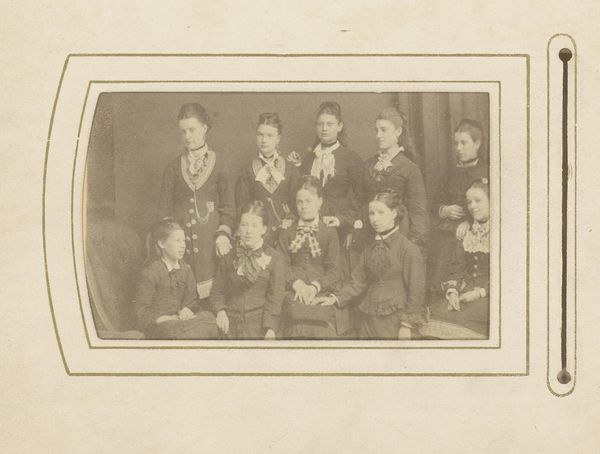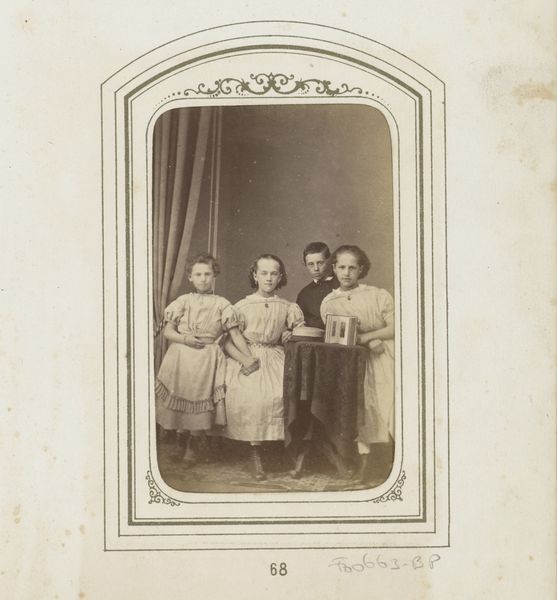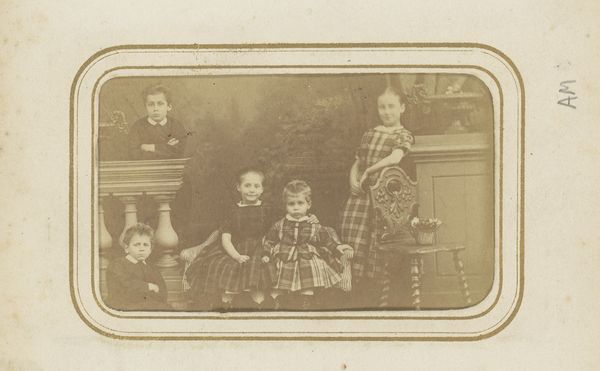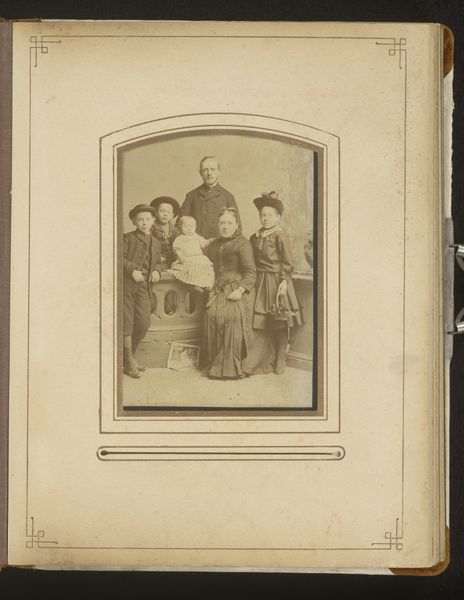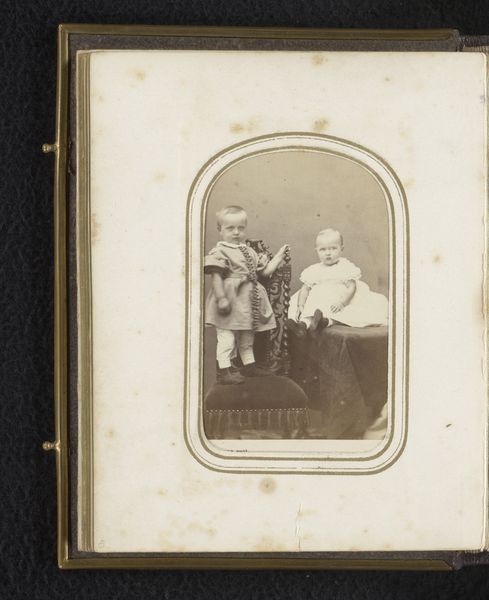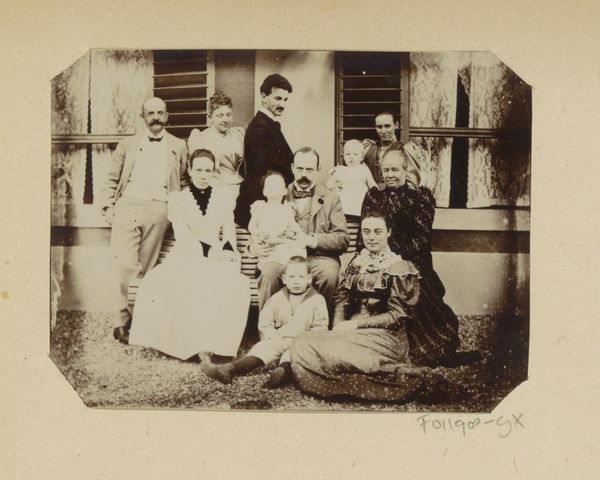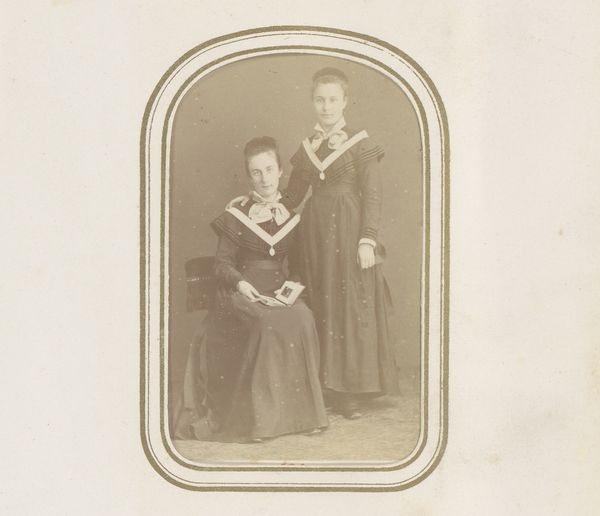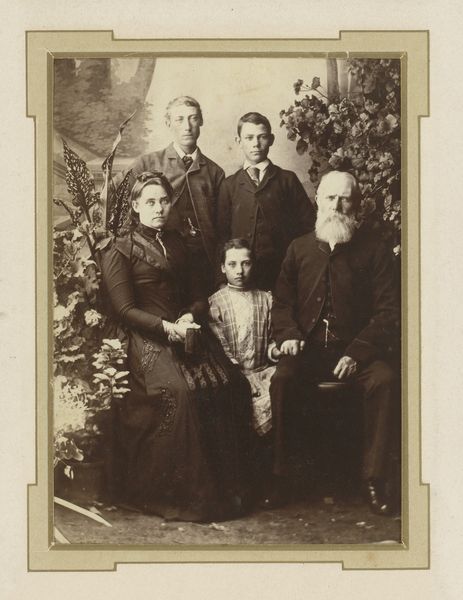
photography, gelatin-silver-print
#
portrait
#
german-expressionism
#
archive photography
#
photography
#
historical photography
#
group-portraits
#
gelatin-silver-print
Dimensions: height 88 mm, width 55 mm, height 100 mm, width 58 mm
Copyright: Rijks Museum: Open Domain
Curator: This is a gelatin silver print, a group portrait of Kaiser Wilhelm II of Germany with his family, created around 1896. What are your first thoughts? Editor: An instant impression of rigid formality. Everyone is stiff, posed, locked in place. A sense of duty hangs heavy in the air, like a… well, like a pronouncement from the throne itself. It almost feels staged, like theater. Curator: Indeed. The composition, typical for the era, reinforces social hierarchies. Notice how Wilhelm II is centered and slightly elevated. The use of photography for this purpose highlights its role as a tool of power. It solidifies the image of imperial authority. Editor: Absolutely. Photography, though still relatively new, was becoming the propaganda arm of the powerful. The material itself, the gelatin silver print, gives it this very specific tonal range, these faded blacks, like a dream already fading into the past. Curator: Precisely! Gelatin silver prints became a dominant medium by the late 19th century due to their fine detail and ease of reproduction. Consider how mass-produced images like these would have circulated. What impact they had on shaping perceptions of the Kaiser. Editor: Thinking about process… there must have been some discomfort for the family too; even if well practiced, imagine maintaining a composed look for an exposure. There's a subtle resistance flickering beneath those perfectly tailored clothes and forced smiles, a story hidden beneath the gloss. Curator: Exactly! And look at the children, particularly those dressed in sailor suits. Their attire isn't merely fashionable; it evokes a sense of naval strength, reinforcing Germany's burgeoning imperial ambitions. Even their clothing serves as a signifier of national power. Editor: And the textures. The sharp delineation in the fabrics of their clothing! It brings me back to how important material comforts were during that age. It feels indulgent yet fragile at the same time—all this pomp and circumstance that seems doomed in retrospect. It's a heavy picture, somehow, but the printing has a softness as if a gentle fog envelops each member. Curator: I agree. Understanding its context of production illuminates its significance. From a materials standpoint, its fragility mirrors the very empire it portrays. A fascinating collision of industrial progress and social control made visible. Editor: Yes, there’s such a peculiar vulnerability layered within this image of invincibility. Thank you for teasing this out with me!
Comments
No comments
Be the first to comment and join the conversation on the ultimate creative platform.
